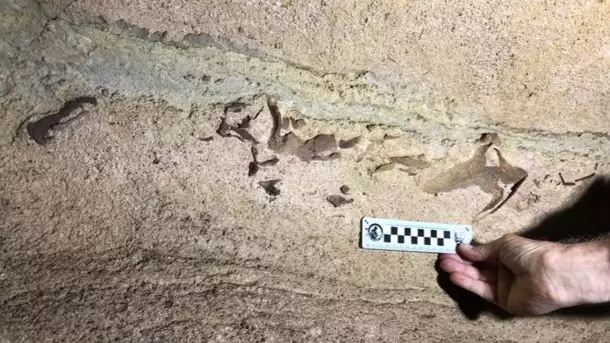
Sharks dating back 330-million-years have been found in the wall of a cave, miles away from the sea.
The discovery, in Mammoth Cave National Park in Kentucky, seemingly revealed 15 to 20 different species of shark, including one the size of a great-white shark.
Mammoth Cave scientists Rick Olson and Rick Toomey made the discovery and sent photographs of the fossils to palaeontologist John-Paul Hodnett, who helped to identify the creatures.
Hodnett told 9News: "There's hardly ever any record at all of sharks teeth coming from these rocks.
Advert
"This is a brand-new record of sharks from a particular layer of time."
The photos he saw showed a lot of teeth, and he also spotted sections of fossilised cartilage, which was 'kind of a big deal', according to Hodnett.
He explained to CBS: "It suggested there might have been a shark skeleton in the cave."
This is a big deal to Hodnett because usually shark skeletons, which are made of cartilage, don't fossilise very well.
Advert
So, while shark teeth are often well preserved, their skeletons are less so.
After seeing snaps of the fossils, Hodnett visited the caves for himself. Once there he found a parts of a head that belonged to a prehistoric shark and was roughly the size of a great white.
The lower jaw was around 76cm (2.5ft) complete with teeth and other bits of cartilage, belonging to one animal and then around 100 teeth belonging to other sharks.
Hodnett said: "What we saw in the cave was amazing because just from the shape of the jaw we'll be able to find out more about how this species lived and we'll be able to fit it in the shark family tree more accurately."
Advert
The researchers say the sharks belong to a species called Saivodus striatus, which lived more than 330 million years ago.
They're also hopeful the caves could contain even more fossils, with Hodnett adding: "We literally just scratched the surface, and the sharks are just coming out from that scratch.
"So, hopefully, with more field work, we'll get another good batch of specimens to kind of help get at least some more rich diversity."
Featured Image Credit: John-Paul Hodnett